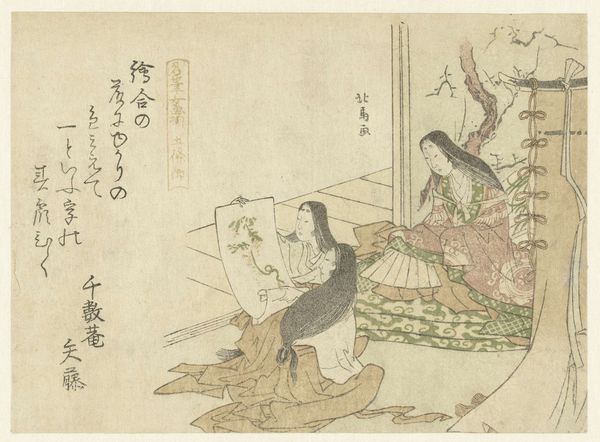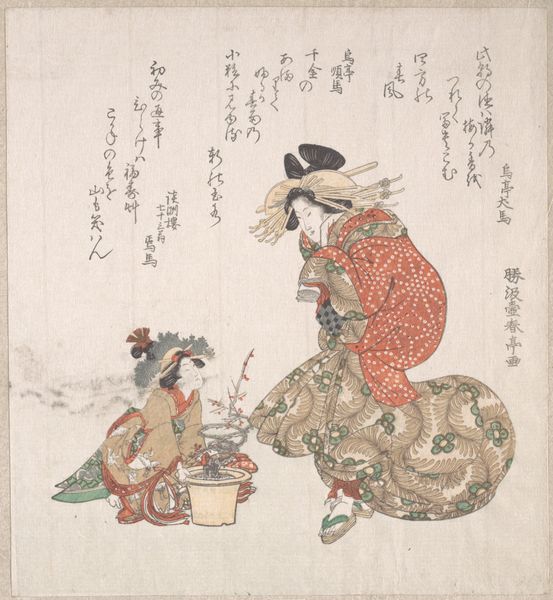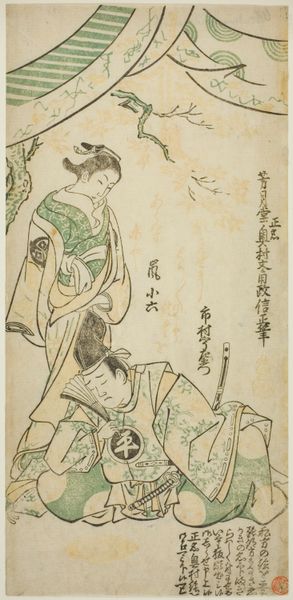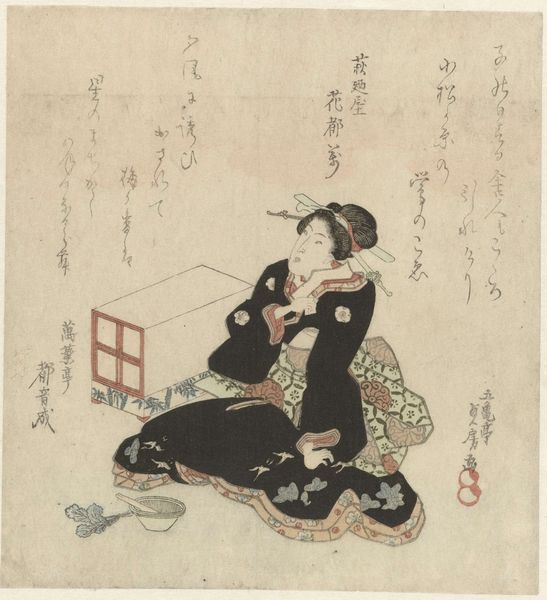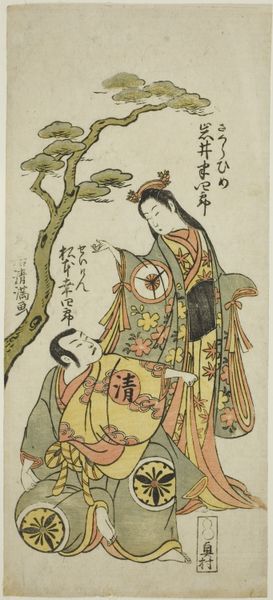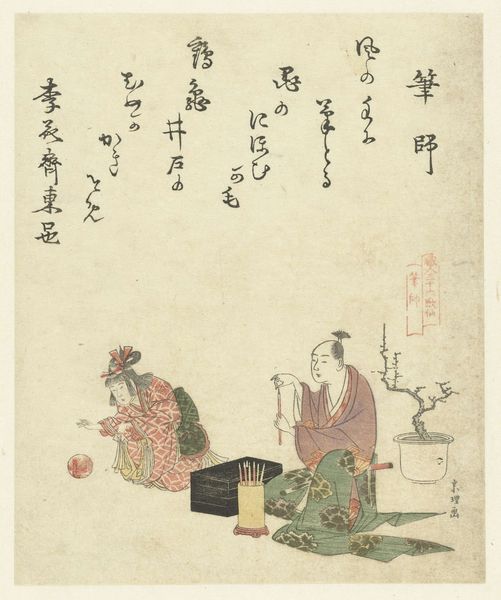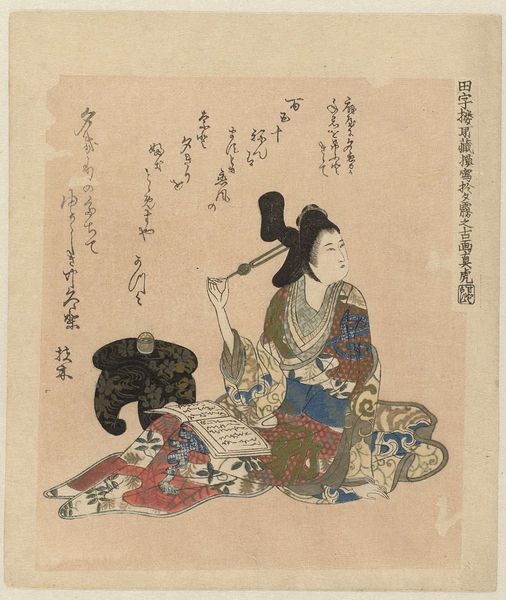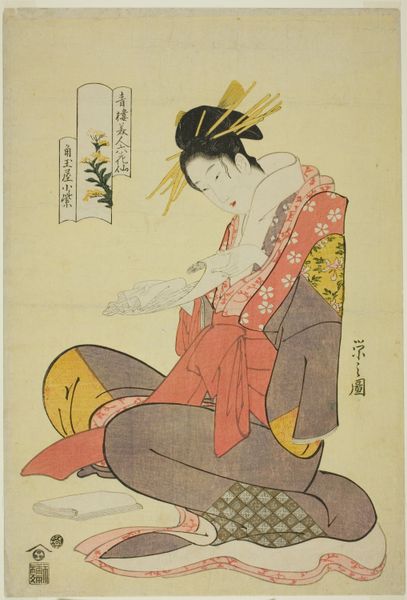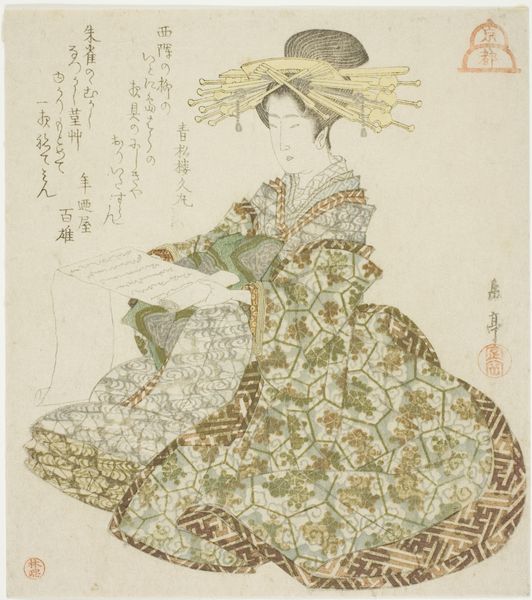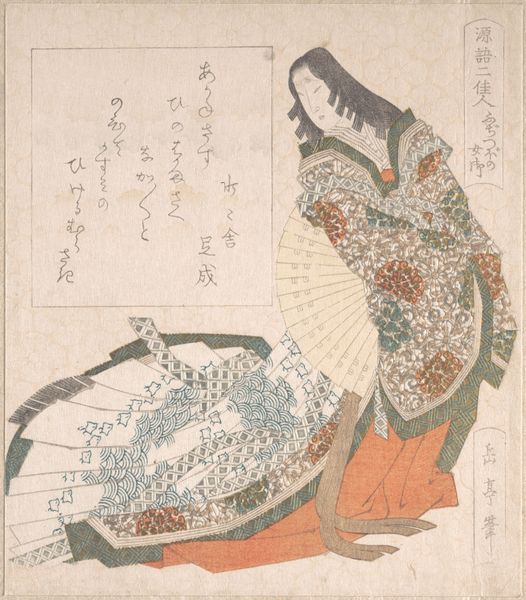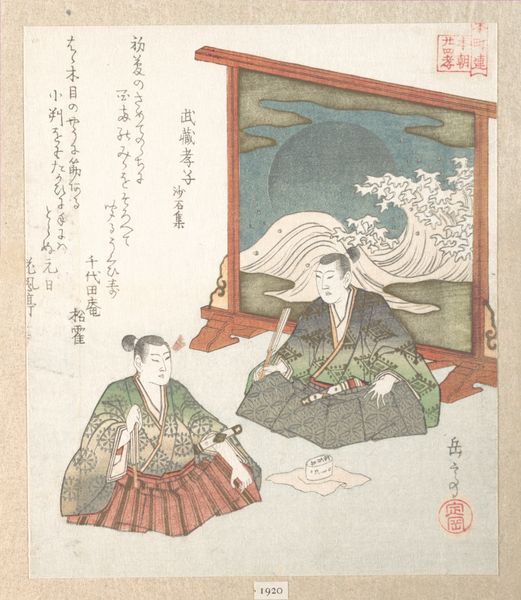
#
narrative-art
# print
#
asian-art
#
ukiyo-e
#
figuration
Dimensions: height 215 mm, width 185 mm
Copyright: Rijks Museum: Open Domain
Editor: Here we have “Chinese wijsgeer met kraanvogel,” or "Chinese Philosopher with Crane", a print by Totoya Hokkei, dating from around 1810 to 1820. It has a sort of dreamlike quality, partially from the light color palette, but also from the odd combination of figures in the image. How do you interpret this work through a Formalist lens? Curator: Primarily, my gaze is drawn to the linear elements. The stark verticals of the crane’s legs are counterpointed by the cascading lines of the figure's robe, creating a dynamic tension within a seemingly static composition. Observe how the artist employs contrasting textures. Editor: I do notice that, it's almost as though the linear details are flattened. Are you referring to how Hokkei manipulated perspective to direct our eye? Curator: Precisely. Hokkei subverts conventional perspective, emphasizing the flatness of the picture plane. We aren't looking to discern the story that is trying to be told, but the manipulation of its artistic tools. Editor: I see what you mean! I was so distracted by trying to understand what’s happening in the piece that I was missing that. I guess paying closer attention to artistic elements over narrative can reveal the intricacies of composition, form, and ultimately the aesthetic qualities that shape our viewing experience. Curator: Indeed. It is about learning to value form over content to begin your evaluation of the artwork. Hopefully that will allow a closer interaction with pieces in the future.
Comments
No comments
Be the first to comment and join the conversation on the ultimate creative platform.
